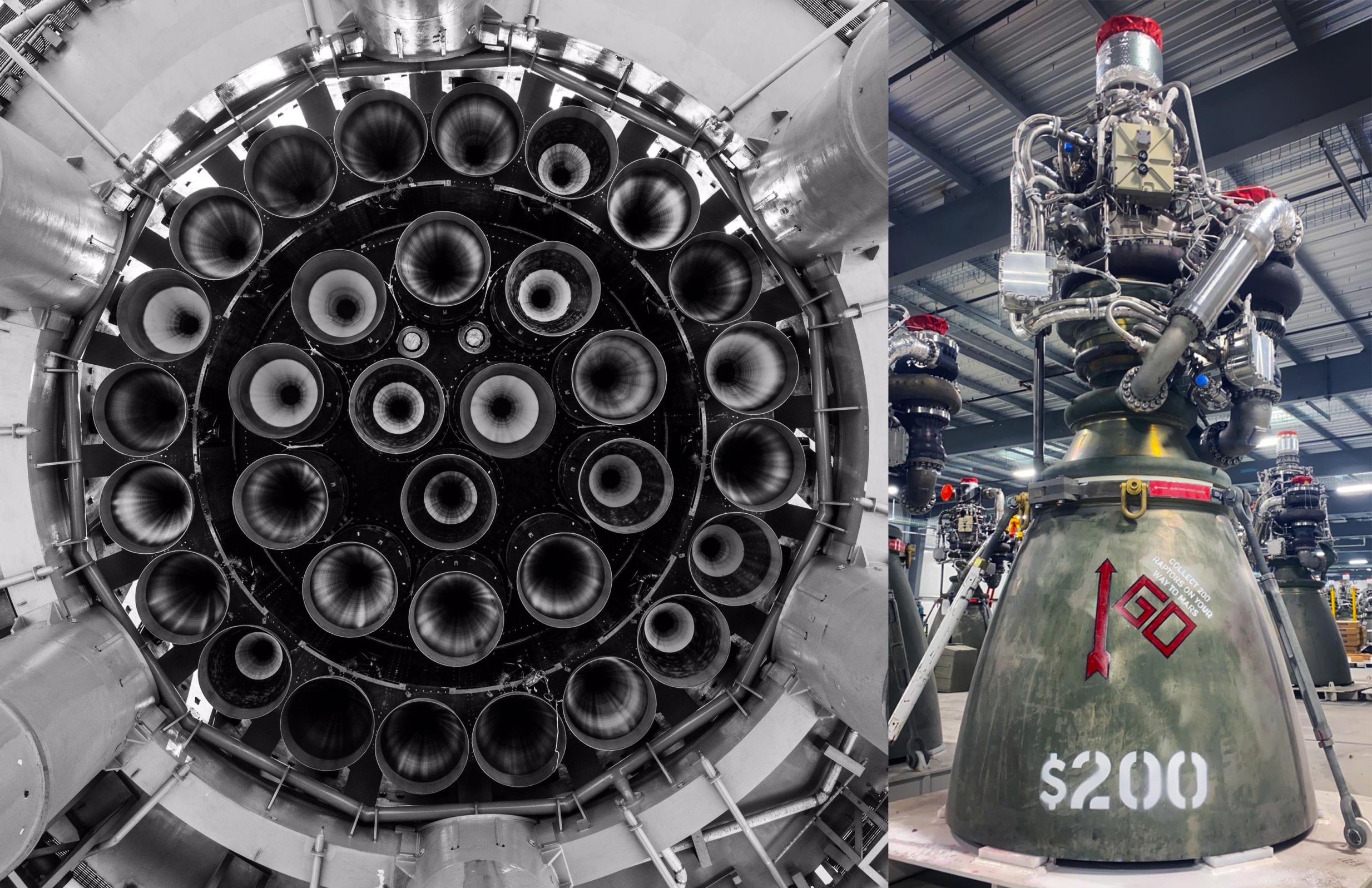
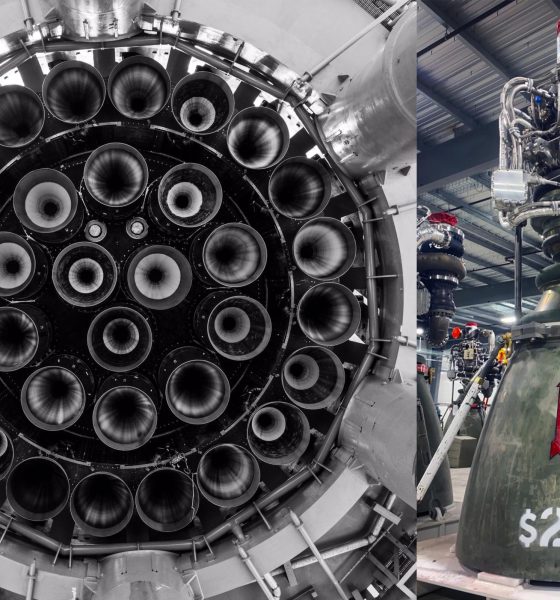
News
SpaceX ships Starship’s 200th upgraded Raptor engine
A day after revealing the completion of the 200th Falcon upper stage and Merlin Vacuum engine, SpaceX has announced that it also recently finished building Starship’s 200th upgraded Raptor engine.
Starship – and Raptor, by extension – has yet to reach orbit and is likely years away from scratching the surface of the established success and reliability of the Falcon upper stage and MVac. But compared to MVac, Raptor is more complex, more efficient, more than twice as powerful, experiences far more stress, and is three times younger.
And Raptor 2 isn’t the first version of the engine. Before SpaceX shipped its first Raptor 2 prototype, it manufactured 100 Raptor 1 engines between the start of full-scale testing in February 2018 and July 2021. By late 2021 or early 2022, when Raptor 2 took over, the total number of Raptor 1 engines produced likely reached somewhere between 125 and 150 – impressive but pale in comparison to SpaceX’s Raptor 2 ambitions.
From the start, Raptor 2’s purpose was to make future Raptors easier, faster, and cheaper to manufacture. The ultimate goal is to eventually reduce the cost of Raptor 2 production to $1000 per ton of thrust, or $230,000 at Raptor 2’s current target of 230 tons (~510,000 lbf) of thrust. As of mid-2019, Musk reported that each early Raptor 1 prototype cost “more” than $2 million for what would turn out to be 185 tons of thrust (~$11,000 per ton). It’s not clear if that ever appreciably changed.
In response, SpaceX strived to make Raptor 2 simpler wherever possible, removing a large part of the maze of primary, secondary, and tertiary plumbing. In 2022, CEO Elon Musk confirmed that SpaceX had even removed a complex torch igniter system for Raptor 2’s main combustion chamber. All that simplification made Raptor 2 much easier to build in theory, and SpaceX’s production figures have more than confirmed that theory. Despite those simplifications, SpaceX was also able to boost Raptor 2’s thrust by 25% by sacrificing just 1% of Raptor 1’s efficiency.
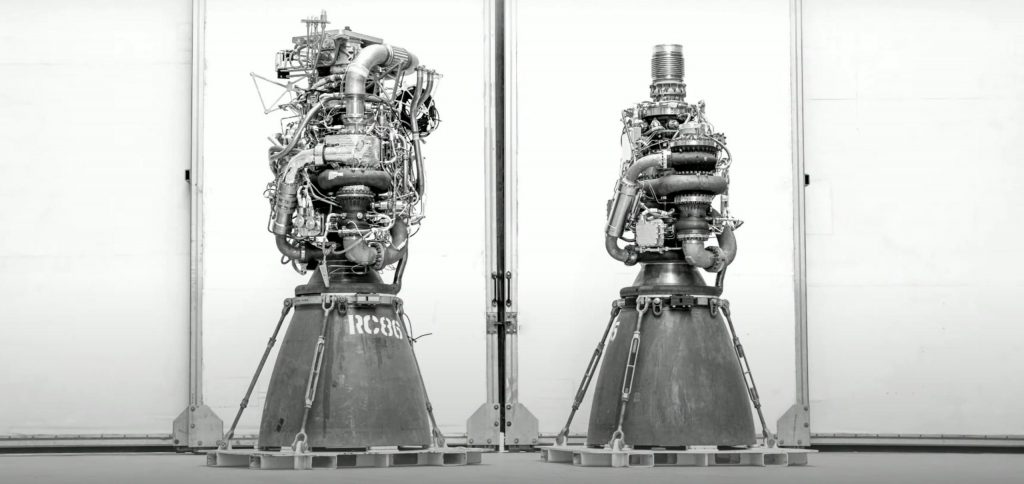
Beginning with its first delivery in February 2018, SpaceX produced the first 100 Raptor 1 engines in about 36 months. In the first 11 to 12 months of Raptor 2 production, SpaceX has delivered 200 engines. That translates to at least six times the average throughput, but the true figure is even higher. In June 2019, Musk stated that SpaceX was “aiming [to build a Raptor] engine every 12 hours by end of year.” As is usually the case, that progress took far longer to realize. But in October 2022, a senior NASA Artemis Program official revealed that SpaceX recently achieved sustained production of one Raptor 2 engine per day for a full week.
Such a high rate – likely making Raptor one of the fastest-produced orbital-class rocket engines in history – is required because SpaceX’s next-generation Starship rocket needs a huge amount of engines. The Starship upper stage currently requires three sea-level-optimized Raptors and three vacuum-optimized Raptors, and SpaceX has plans to increase that to nine engines total. Starship’s Super Heavy booster is powered by 33 sea-level Raptors.
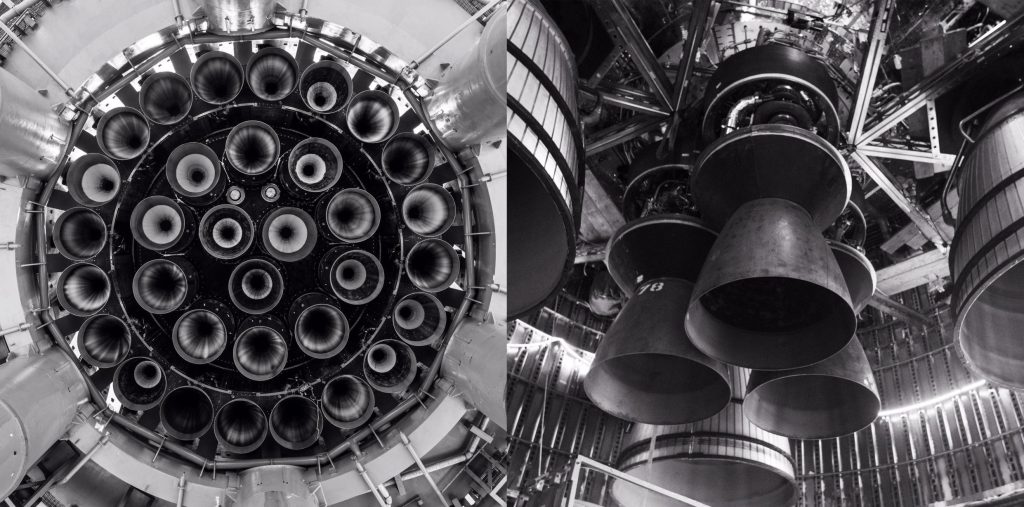
Orbital-class versions of Starship and Super Heavy have never flown, let alone demonstrated successful recovery or reuse, so SpaceX has to operate under the assumption that every orbital test flight will consume 39 Raptors. Even after the reuse of Super Heavy boosters or Starships becomes viable, taking significant strain off of Raptor demand, SpaceX wants to manufacture a fleet of hundreds or even thousands of Starships and a similarly massive number of boosters. To outfit that massive fleet, SpaceX would have to mass-produce orbital-class Raptor engines at a scale that’s never been attempted.
But it will likely be years – if not a decade or longer – before SpaceX is in a position to attempt to create that mega-fleet. If the Raptor 2 engines SpaceX is already building are modestly reliable and reusable, and it doesn’t take more than 5-10 orbital test flights to begin reusing Starships and Super Heavy boosters, a production rate of one engine per day is arguably good enough to support the next few years of realistic engine demand.
SpaceX’s first orbital Starship launch attempt could occur as early as December 2022, although Q1 2023 is more likely. SpaceX currently has permission for up to five orbital Starship launches per year out of its Starbase, Texas facilities and will likely try to take full advantage of that with several back-to-back test flights in a period of 6-12 months.

News
Ford cancels all-electric F-150 Lightning, announces $19.5 billion in charges
“Rather than spending billions more on large EVs that now have no path to profitability, we are allocating that money into higher returning areas, more trucks and van hybrids, extended range electric vehicles, affordable EVs, and entirely new opportunities like energy storage.”
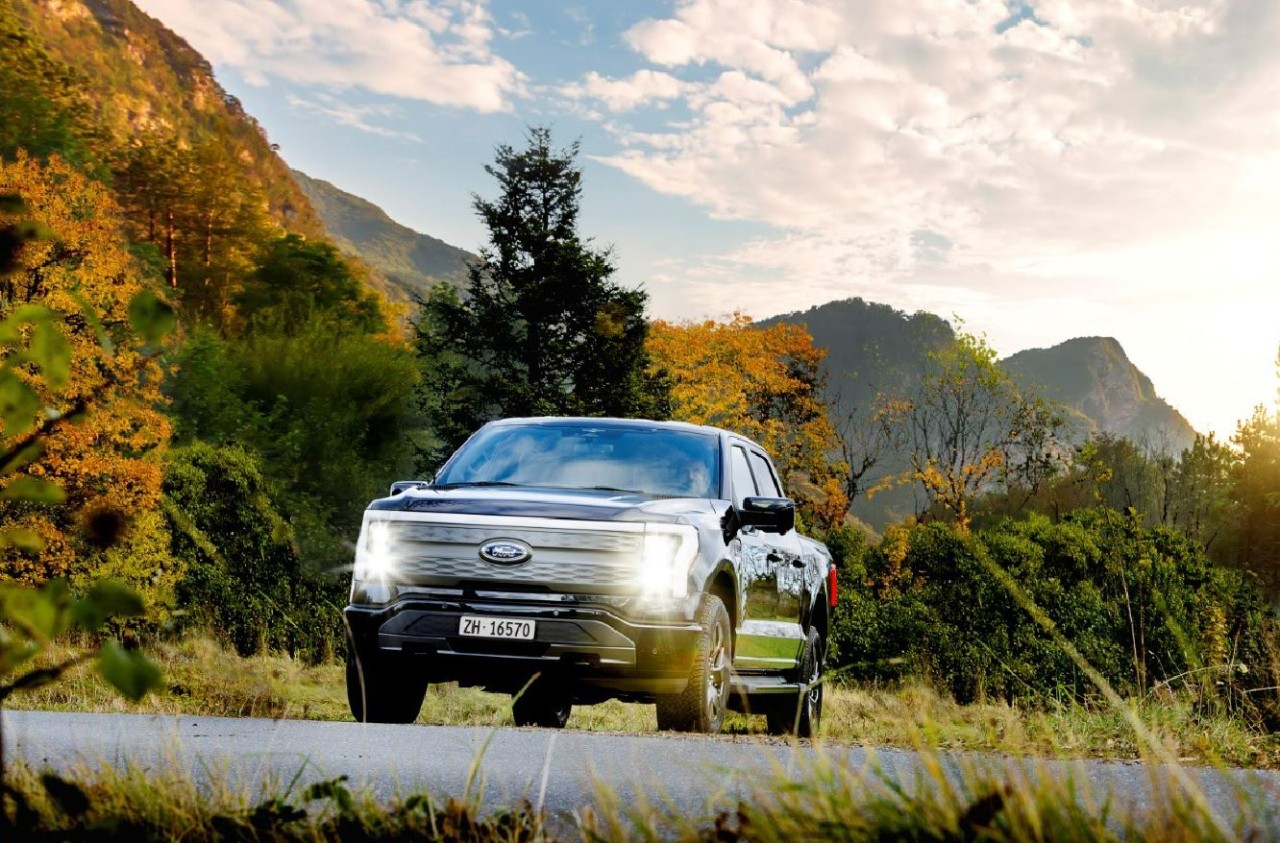
Ford is canceling the all-electric F-150 Lightning and also announced it would take a $19.5 billion charge as it aims to quickly restructure its strategy regarding electrification efforts, a massive blow for the Detroit-based company that was once one of the most gung-ho on transitioning to EVs.
The announcement comes as the writing on the wall seemed to get bolder and more identifiable. Ford was bleeding money in EVs and, although it had a lot of success with the all-electric Lightning, it is aiming to push its efforts elsewhere.
It will also restructure its entire strategy on EVs, and the Lightning is not the only vehicle getting the boot. The T3 pickup, a long-awaited vehicle that was developed in part of a skunkworks program, is also no longer in the company’s plans.
Instead of continuing on with its large EVs, it will now shift its focus to hybrids and “extended-range EVs,” which will have an onboard gasoline engine to increase traveling distance, according to the Wall Street Journal.
“Ford no longer plans to produce select larger electric vehicles where the business case has eroded due to lower-than-expected demand, high costs, and regulatory changes,” the company said in a statement.
🚨 Ford has announced it is discontinuing production of the F-150 Lightning, as it plans to report a charge of $19.5 billion in special items.
The Lightning will still be produced, but instead with a gas generator that will give it over 700 miles of range.
“Ford no longer… pic.twitter.com/ZttZ66SDHL
— TESLARATI (@Teslarati) December 15, 2025
While unfortunate, especially because the Lightning was a fantastic electric truck, Ford is ultimately a business, and a business needs to make money.
Ford has lost $13 billion on its EV business since 2023, and company executives are more than aware that they gave it plenty of time to flourish.
Andrew Frick, President of Ford, said:
“Rather than spending billions more on large EVs that now have no path to profitability, we are allocating that money into higher returning areas, more trucks and van hybrids, extended range electric vehicles, affordable EVs, and entirely new opportunities like energy storage.”
CEO Jim Farley also commented on the decision:
“Instead of plowing billions into the future knowing these large EVs will never make money, we are pivoting.”
Farley also said that the company now knows enough about the U.S. market “where we have a lot more certainty in this second inning.”
News
SpaceX shades airline for seeking contract with Amazon’s Starlink rival

SpaceX employees, including its CEO Elon Musk, shaded American Airlines on social media this past weekend due to the company’s reported talks with Amazon’s Starlink rival, Leo.
Starlink has been adopted by several airlines, including United Airlines, Qatar Airways, Hawaiian Airlines, WestJet, Air France, airBaltic, and others. It has gained notoriety as an extremely solid, dependable, and reliable option for airline travel, as traditional options frequently cause users to lose connection to the internet.
Many airlines have made the switch, while others continue to mull the options available to them. American Airlines is one of them.
A report from Bloomberg indicates the airline is thinking of going with a Starlink rival owned by Amazon, called Leo. It was previously referred to as Project Kuiper.
American CEO Robert Isom said (via Bloomberg):
“While there’s Starlink, there are other low-Earth-orbit satellite opportunities that we can look at. We’re making sure that American is going to have what our customers need.”
Isom also said American has been in touch with Amazon about installing Leo on its aircraft, but he would not reveal the status of any discussions with the company.
The report caught the attention of Michael Nicolls, the Vice President of Starlink Engineering at SpaceX, who said:
“Only fly on airlines with good connectivity… and only one source of good connectivity at the moment…”
CEO Elon Musk replied to Nicolls by stating that American Airlines risks losing “a lot of customers if their connectivity solution fails.”
American Airlines will lose a lot of customers if their connectivity solution fails
— Elon Musk (@elonmusk) December 14, 2025
There are over 8,000 Starlink satellites in orbit currently, offering internet coverage in over 150 countries and territories globally. SpaceX expands its array of satellites nearly every week with launches from California and Florida, aiming to offer internet access to everyone across the globe.
Currently, the company is focusing on expanding into new markets, such as Africa and Asia.
News
Tesla Model Y Standard stuns in new range test, besting its Premium siblings
Tesla’s newer vehicles have continued to meet or exceed their EPA estimates. This is a drastic change, as every 2018-2023 model year Tesla that Edmunds assessed did not meet its range estimates.

The Tesla Model Y Standard stunned in a new range test performed by automotive media outlet Edmunds, besting all of its Premium siblings that are more expensive and more luxurious in terms of features.
Testing showed the Model Y Standard exceeded its EPA-estimated range rating of 321 miles, as Edmunds said it is the “longest-range Model Y that we’ve ever put on our loop.” In the past, some vehicles have come up short in comparison with EPA ranges; for example, the Model Y’s previous generation vehicle had an EPA-estimated range of 330 miles, but only drove 310.
Additionally, the Launch Series Model Y, the first configuration to be built in the “Juniper” program, landed perfectly on the EPA’s range estimates at 327 miles.
It was also more efficient than Premium offerings, as it utilized just 22.8 kWh to go 100 miles. The Launch Series used 26.8 kWh to travel the same distance.
It is tested using Edmunds’ traditional EV range testing procedure, which follows a strict route of 60 percent city and 40 percent highway driving. The average speed throughout the trip is 40 MPH, and the car is required to stay within 5 MPH of all posted speed limits.
Each car is also put in its most efficient drive setting, and the climate is kept on auto at 72 degrees.
“All of this most accurately represents the real-world driving that owners do day to day,” the publication says.
With this procedure, testing is as consistent as it can get. Of course, there are other factors, like temperature and traffic density. However, one thing is important to note: Tesla’s newer vehicles have continued to meet or exceed their EPA estimates. This is a drastic change, as every 2018-2023 model year Tesla that Edmunds assessed did not meet its range estimates.
Tesla Model Y Standard vs. Tesla Model Y Premium
Tesla’s two Model Y levels both offer a great option for whichever fits your budget. However, when you sit in both cars, you will notice distinct differences between them.
The Premium definitely has a more luxurious feel, while the Standard is stripped of many of the more premium features, like Vegan Leather Interior, acoustic-lined glass, and a better sound system.
You can read our full review of the Model Y Standard below:
Tesla Model Y Standard Full Review: Is it worth the lower price?








